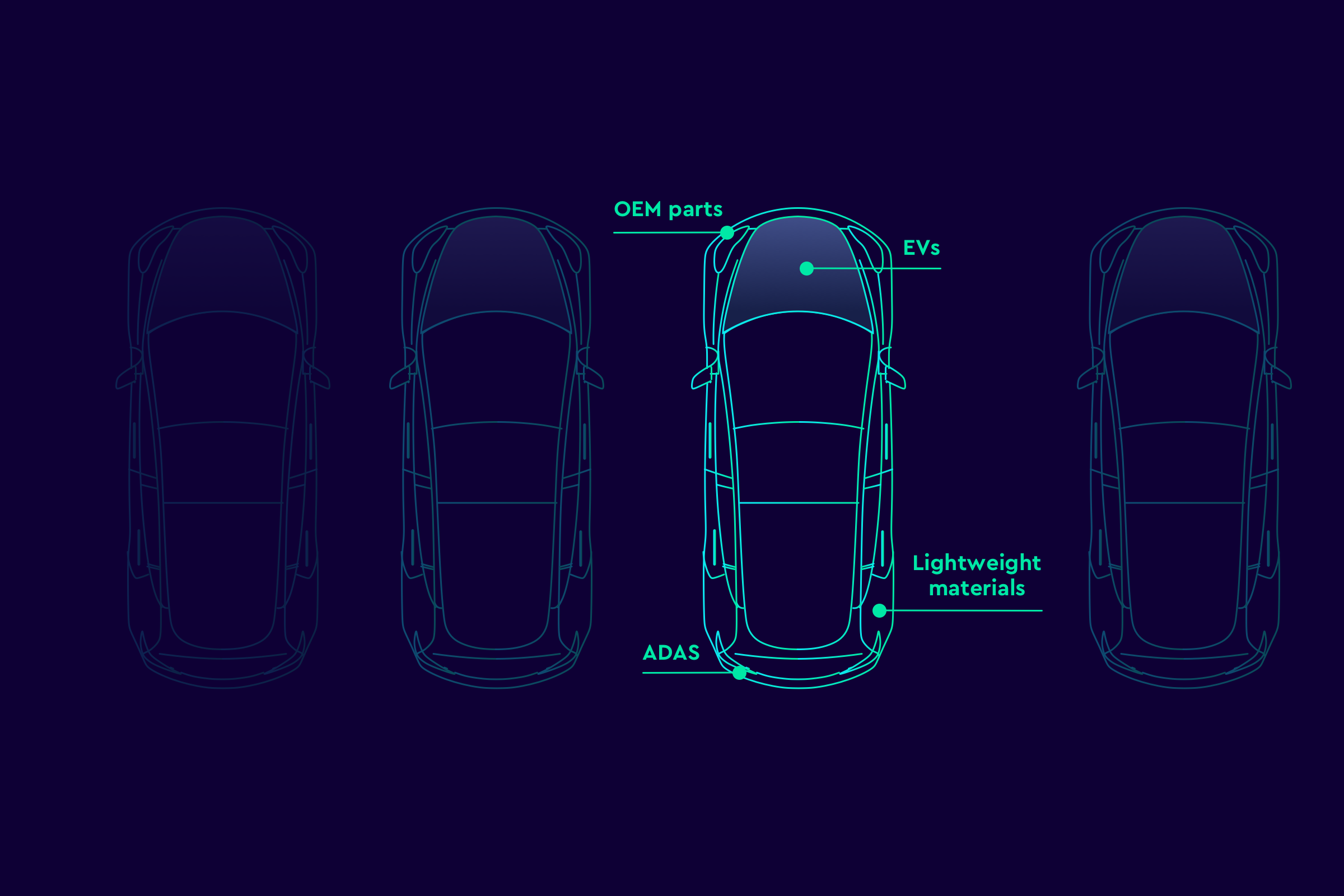Due to the constant developments within the automotive industry, cars have become more advanced than ever before. In turn, this has made repairing car damage a lot more complicated. Besides having to find new ways to prevent higher costs and increased cycle times, companies now also have to recognize whether or not a body repair shop is equipped and certified to be able to repair the damage in the first place. Fleet- or claim managers need to ensure that the advanced technology and highly sensitive sensors present in today's vehicles are handled accordingly to ensure the safety of their drivers.
This article, based on our whitepaper: ‘How fleets can reduce costs by allocating repairs more accurately’, explains the importance of network assessment and shares 4 easy steps that will help fleet-or claim managers find the optimal repair solution.
Inventorying the network's capabilities
Every vehicle and damage differs from one another, and more and more repairs are starting to require a distinct approach. For example, traditional repair methods are not always applicable on lightweight materials, repairing electric vehicles (EVs) can be potentially dangerous if the proper safety measures are not followed, and Advanced Driver Assistance Systems (ADAS) work with highly sensitive sensors that require careful calibration. As a result, lots of body repair shops have started narrowing their focus by specializing and investing in training, equipment, and facilities. Therefore, it's become essential to be aware of the capabilities within your network. By being able to tap into repairers’ specific strengths, it becomes easier to determine if a shop meets the requirements to repair a certain car damage.
Generally speaking, body repair shops that are specialized in certain materials, types of damage, repair methods, or makes can perform those repairs more efficiently than those who aren't. Moreover, a number of vehicles nowadays sometimes require replacement parts from the original equipment manufacturer (OEM) to support their functions. OEMs often supply these parts exclusively to brand-certified body repair shops.
Safe to say, a simple scratch on a bumper isn’t always that simple anymore, and there are many benefits to knowing where to allocate certain repairs to. Companies can start allocating repairs more accurately when they have up-to-date knowledge of their vehicles at hand and an inventory of the capabilities within their repairer network.
How to identify the most suitable repair solution
There are a few steps fleet- or claim managers can take to more easily find a suitable body repair shop.

- Know your vehicles
Companies should keep track of the number and types of vehicles they have. That way, whenever a damage occurs, they’ll be able to find out if their vehicle is electric, equipped with ADAS, is built with lightweight materials or has any OEM restrictions. This will help allocate repairs to a body repair shop that's capable of handling that vehicle and type of damage. - Gather knowledge of your network
The second step in this process is to identify and keep track of qualifications, specialities, and certifications within your repairer network. This can be done by contacting body repair shops directly, visiting the shop, and assessing their facilities through online information, and customers’ testimonials. - Make use of the availability within your network
After defining what a vehicle needs precisely, and identifying suitable body repair shops that are fully equipped to handle the repair, leveraging their availability can be the deciding factor to unlock new benefits. For example, if a specialized repairer charges more for the repair, but is available a week sooner than the cheaper alternative, chances are it will still be less costly. Vehicle downtime and rental costs can be minimised drastically, and after taking step 1 and 2, fleet- or claim managers never have to worry about quality either. - Look to technology
Accurate and up-to-date network assessment doesn't seem feasible without the help of technology, especially for companies that have a large number of diverse vehicles and are active in multiple locations. However, with the integration of a digital repair handling solution, inventorying network capabilities can be fully automated and leveraged at will.
Get started today
Fixico is here to help you and your business unlock the potential of digital repair management. Want to see our platform in action? Request a free demo today!
